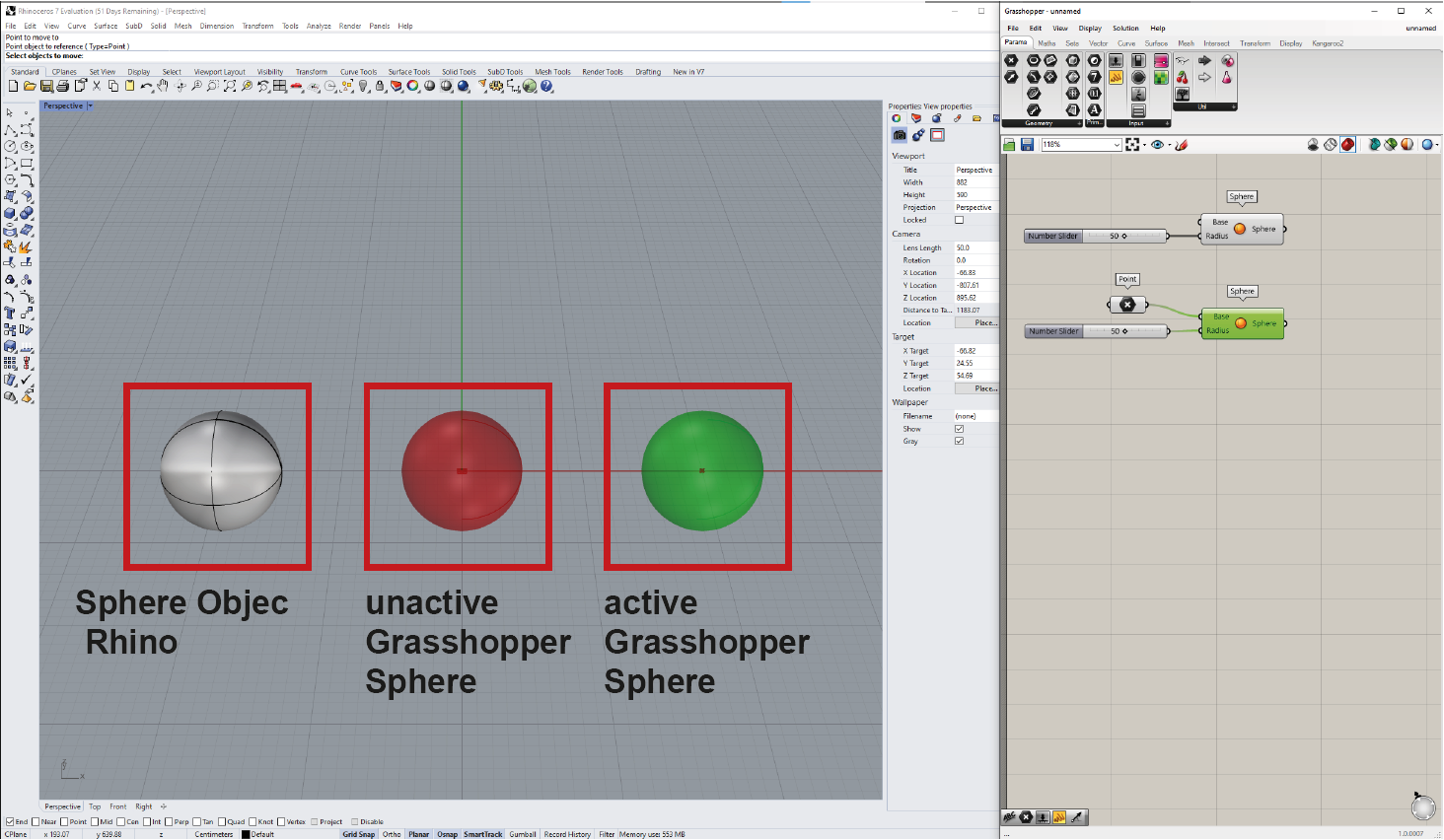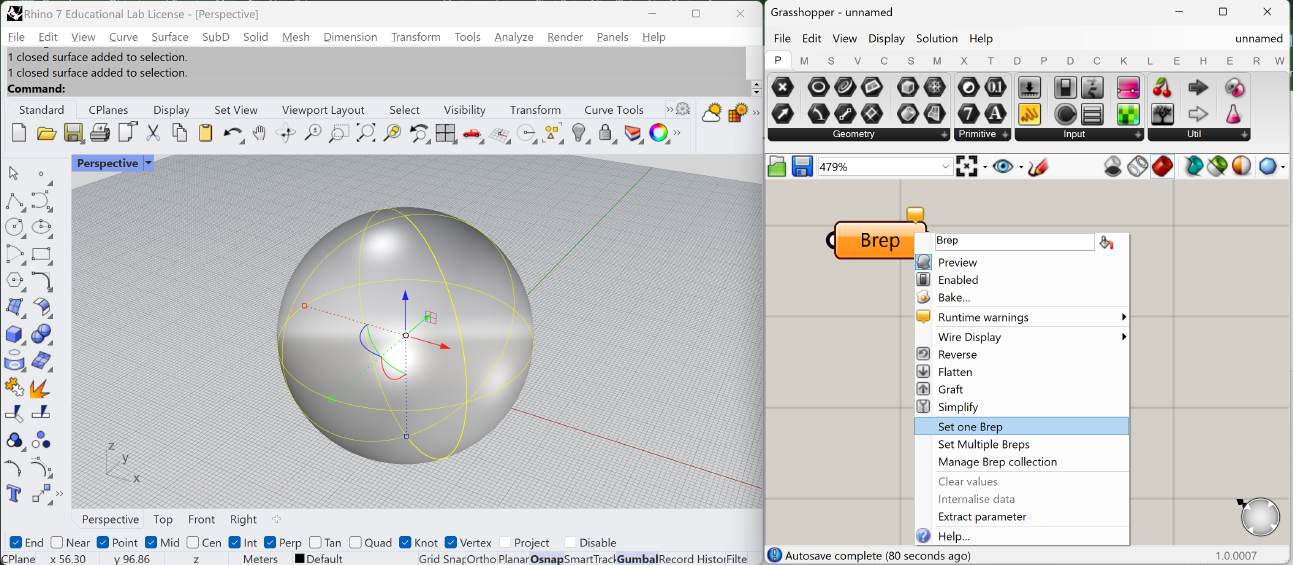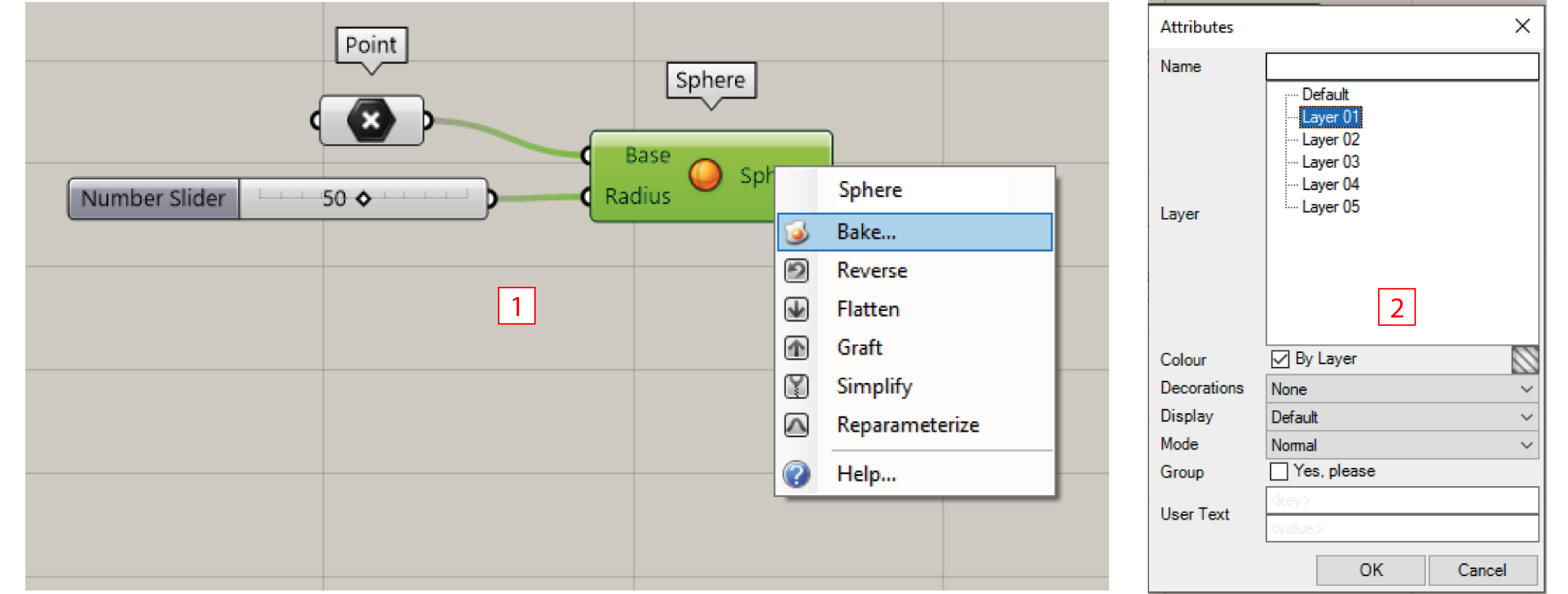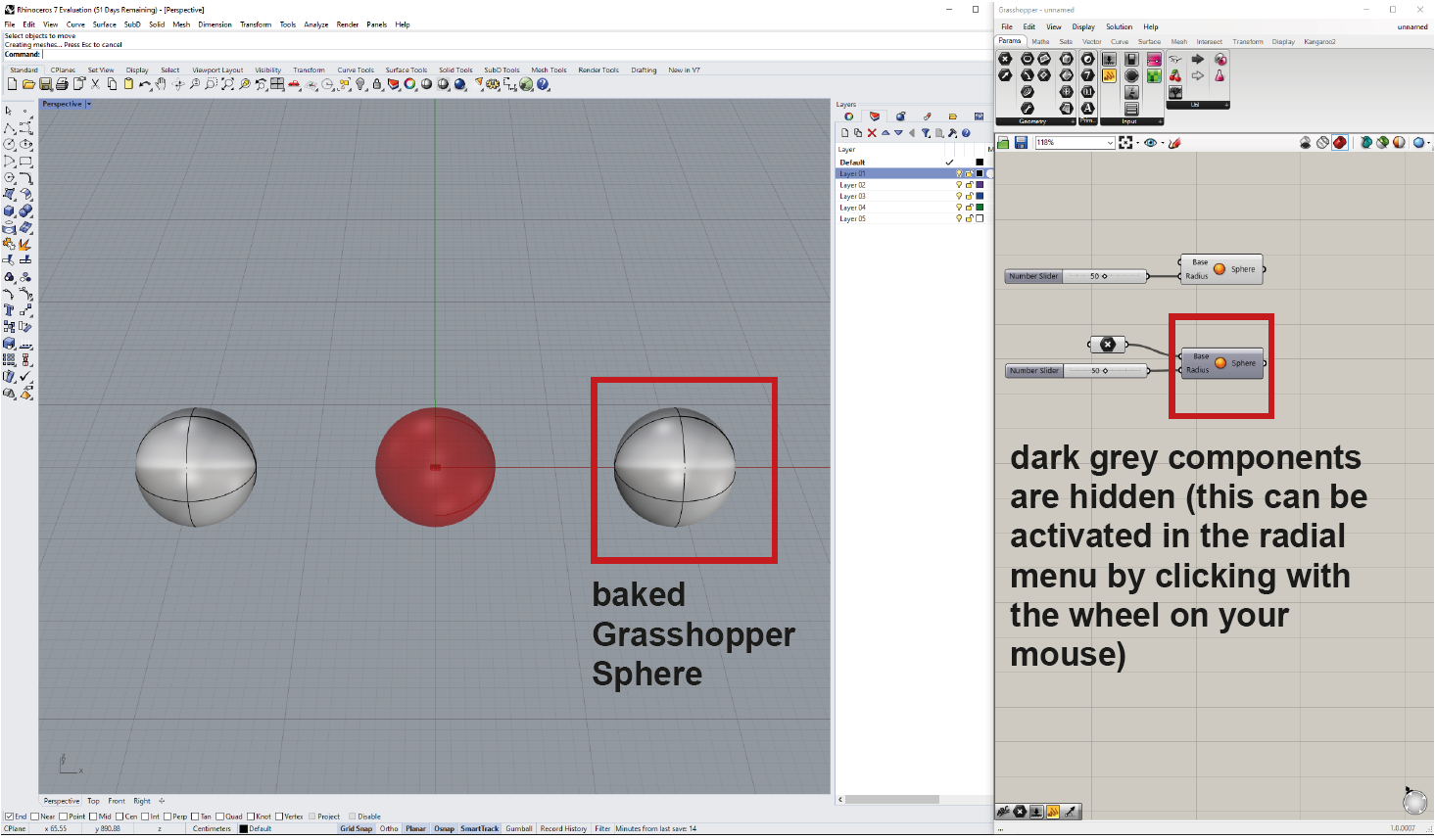Geometry
Appearance
Within Grasshopper, inputs and outputs can be seamlessly integrated with the Rhino workspace. Geometries in Grasshopper can either be referenced from objects within Rhino or directly constructed using Grasshopper components. Similarly, you can translate Grasshopper geometries into editable forms in Rhino using the bake command.

Here you see the Rhino viewport and Grasshopper canvas side by side. The three spheres in the rhino workspace illustrate their origin through a distinct color coding:
- The grey one on the left is generated in Rhino with the command
sphere. It is also editable and can interact with other Rhino objects.- The red one in the middle is generated with the sphere component from Grasshopper. The red wireframe indicates an origin from Grasshopper. Red also means, that the component containing this geometry an Grasshopper is currently not selected.
- If you activate the component in Grasshopper it not just turns green in Grasshopper. The red wireframe in the Rhino viewort turns green as well.
Reference from Rhino
In Grasshopper, parameters like Point, Curve, Surface and Brepare normally used to
reference points, curves, surfaces and polysurfaces in Rhino, respectively.
It is worth noting that although there is parameter like Circle in grasshopper,
you still need to use curve instead of circle to reference a circle in Rhino.
One reason is that you can gain more flexibility using Curve.
You can still derive circle-specific properties from it, like its center point or radius, but you also have the broader range of functionalities available for curves.
Note on Brep: If you check Params tag in Grasshopper, there is not parameter called Polysurface.
To represent polysurface(s) in Rhino, we use the Brep component in Grasshopper. Brep stands for boundary representation that describes 3D shapes by delineating their boundaries.
BREPs provide a very comprehensive representation including the vertices, edges, surfaces of the polysurface.
A Brep can be a single surface or a polysurface, meaning you can also use Brep to represent surfaces in Rhino.

To reference a geometry (for instance, the sphere depicted in the image) from Rhino, select the sphere in Rhino,
right-clickon the parameter and chooseSet one Brep. If you aim to reference several geometries, opt forSet Multiple Breps. This logic can similarly be applied to the other parameters.Note: Again, if you want to reference a polysurface, please use
Brep. You cannot useSurfaceandSet Multiple Surfacesto achieve this. In other words, a polysurface is not equal to multiple surfaces.
Bake to Rhino
Red and green Grasshopper wireframe "holograms" in the Rhino viewport are not editable with Rhino and cannot interact with Rhino objects (no snapping etc.). To enable editing you can bake geometry.

Right-clickon the output node and selectBake.- A window will show up. Here you can define on which layer you would like to place the geometry on after baking. Click
OKto bake it.

Now we have baked the right sphere. Visually and in regard to its behaviour it is now the same as the one we created within Rhino with the
spherecommand (the one on the left).Note: After baking the object, it is no longer connected to Grasshopper and therefore is not affected by any changes made in Grasshopper.

